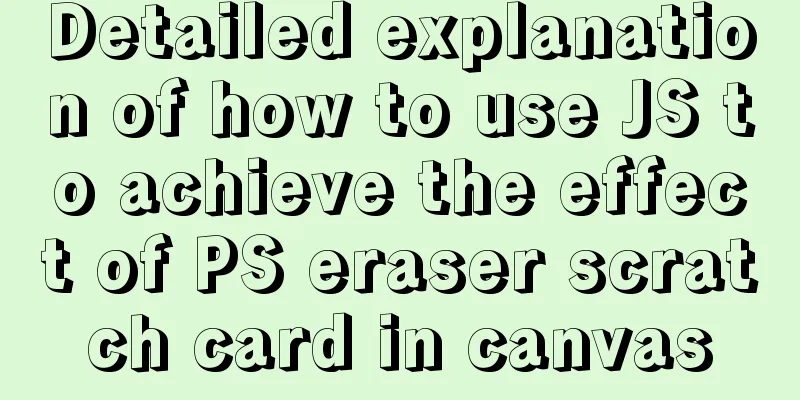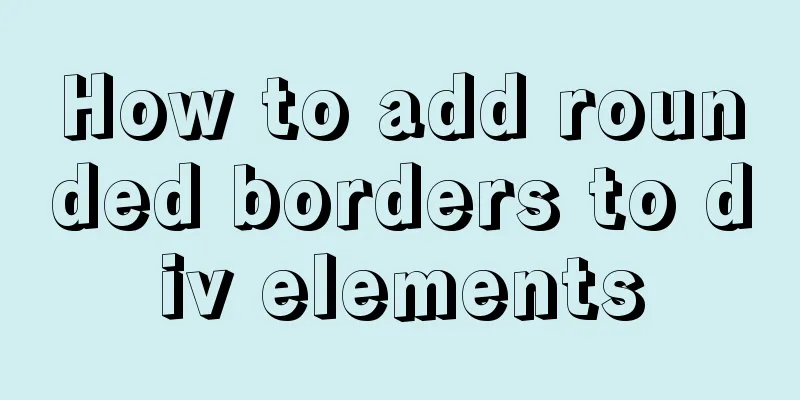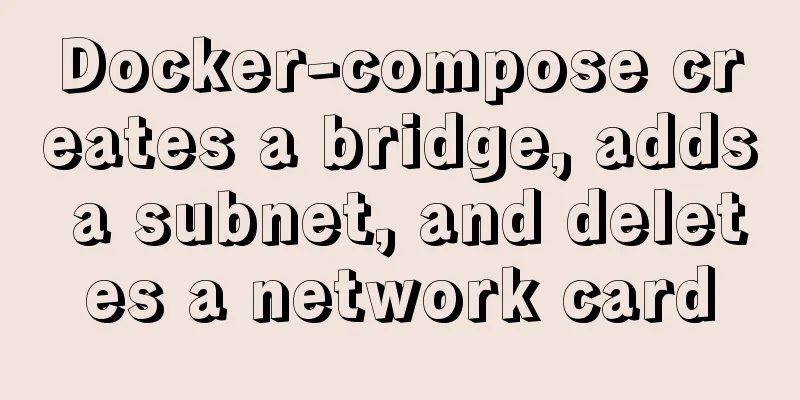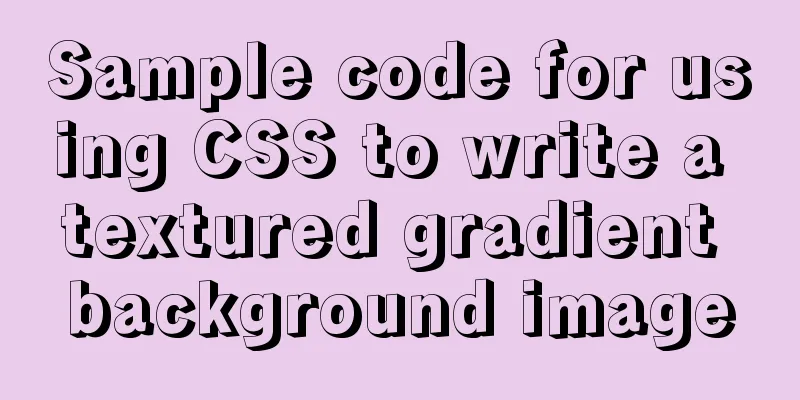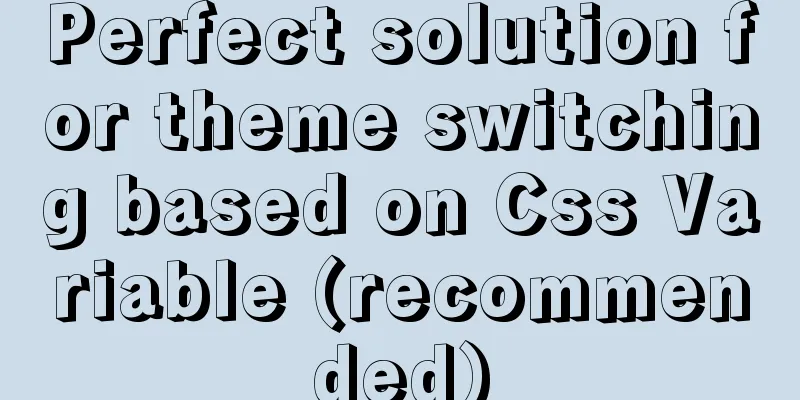Introduction and tips for using the interactive visualization JS library gojs
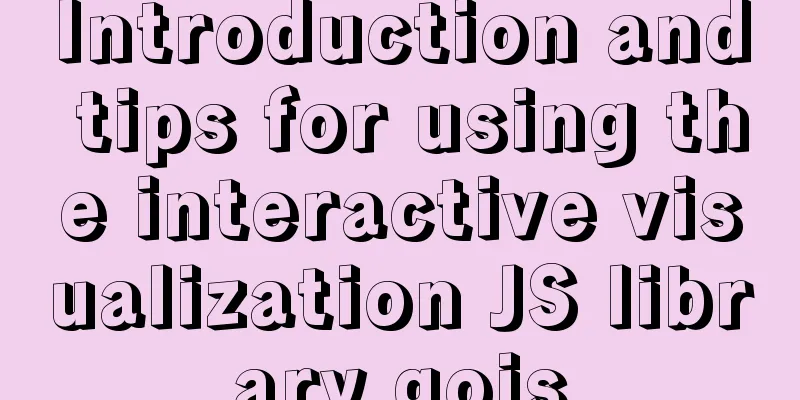
1. Introduction to gojsgojs is a js library for building interactive visual diagrams. It uses customizable templates and layouts to build complex nodes, links, and groups, thereby building simple to complex diagrams, such as flowcharts, mind maps, organizational charts, Gantt charts, etc. It also provides many advanced features for user interaction, such as drag and drop, copy and paste, in-place text editing, etc. gojs is a product of Northwoods Software. Northwoods Software was founded in 1995 and specializes in interactive graphics controls and libraries. Its vision is to provide excellent graphical user interfaces, and it has now grown into a world-class supplier of interactive diagram components and libraries across various platforms. 2. Gojs application scenariosBased on the high constructability of gojs, many types of visualizations can be drawn:
3. Why choose gojs:There are many visualization libraries, such as echarts, highcharts, antv series, d3, and today's protagonist gojs,... Sort by degree of customizability of the drawing:
If the requirements are simple and no custom chart elements are needed, then you can choose the library that best matches the demo effect, echarts or highcharts. If you need to customize the graph elements to a certain extent, you can see if antv g2/g6 demo can meet your needs. You can customize most of the graph elements. If the above cannot meet your needs, then it is highly customizable. You can consider d3js and gojs, or go and watch the demo first to see which one is closer to your needs and adopt it. Summary: gojs is highly customizable and very suitable for complex graph interactions. 4. Gojs Getting Started Guide
The purpose is to have a general understanding of what gojs can do, and to find and confirm which case effect is closer to your needs. You can refer to the case code to complete your needs and achieve twice the result with half the effort. It is also a very good reference material for getting started. After reading one or two case codes, you can also have a basic understanding of gojs drawing.
After reading the case code, I have a basic understanding of gojs drawing. It will be more helpful to understand the drawing concepts and structures before drawing. It’s like knowing the outline before writing, so that your writing ideas will be clearer and more efficient.
// Diagram container <div id="myDiagramDiv" style="height:600px;width:100%;border:1px solid black"></div>
// Reference <script src="https://unpkg.com/gojs/release/go-debug.js"></script>
<script>
// Create a graph instance var $ = go.GraphObject.make;
var diagram = new go.Diagram("myDiagramDiv");
// Bind data diagram.model = new go.GraphLinksModel(
[ // Node { key: "Alpha", color: "lightblue" },
{ key: "Beta", color: "orange" },
{ key: "Gamma", color: "lightgreen" },
{ key: "Delta", color: "pink" }
],
[ // Connection { from: "Alpha", to: "Beta" },
{ from: "Alpha", to: "Gamma" },
{ from: "Beta", to: "Beta" },
{ from: "Gamma", to: "Delta" },
{ from: "Delta", to: "Alpha" }
]
);
</script>
If you want to control the layout, style, nodes, groups, connections, events, etc., you can customize the corresponding template. The following takes the node as an example: // The node template describes how to construct each node diagram.nodeTemplate = $(go.Node, "Auto",
$(go.Shape, "RoundedRectangle", new go.Binding("fill", "color")),
$(go.TextBlock, new go.Binding("text", "key"))
);
More: guides, api 5. Tips (very practical)
Search the library source code for 7eba17a4ca3b1a8346 and find the location: a.yr=bV[Ra("7eba17a4ca3b1a8346")][Ra("78a118b7")](bV,Kk,4,4);Comment or delete the code and change it to the following: a.yr=function () {return true;};
Because the watermark needs to be removed, the library source code must be downloaded, and now front-end projects are basically based on es6 module organization files. Therefore, you need to download go-module.js so that you can import it in the required files: import * as go from './go-module.js'; In addition, since go-module.js has been packaged, you can configure the package to exclude this file from packaging to reduce packaging time. Taking webpack as an example, the modifications are as follows: {
test: /\.js$/,
loader: 'babel-loader',
include: [resolve('src'), resolve('test')],
+ exclude: [resolve('src/assets/lib/')] //Packaged libraries are placed in this directory}
.diagram canvas {
border: none;
outline: none;
}diagram is the class name of the diagram container. 6. Practice: Implementing a visual interactive graph of node grouping relationships
Interface data const data = {
"properties": [
{ "key": "t-2272", "parentKey": "j-1051", "name": "哈哈" },
{ "key": "p-344", "parentKey": "g--1586357764", "name": "test" },
{ "key": "t-2271", "parentKey": "j-1051", "name": "Query" },
{ "key": "t-2275", "parentKey": "j-1052", "name": "Happy" },
{ "key": "j-1054", "parentKey": "p-344", "name": "嘻嘻" },
{ "key": "t-2274", "parentKey": "j-1052", "name": "Query" },
{ "key": "j-1051", "parentKey": "p-444", "name": "hello" },
{ "key": "j-1052", "parentKey": "p-444", "name": "Edit" },
{ "key": "t-2281", "parentKey": "j-1054", "name": "嘻嘻" },
{ "key": "p-444", "parentKey": "g--1586357624", "name": "test" },
{ "key": "g--1586357624", "name": "Data Group 1" },
{ "key": "g--1586357764", "name": "Data Group 2" },
{ "key": "t-2273", "parentKey": "j-1051", "name": "New" }
],
"dependencies": [
{ "sourceKey": "t-2272", "targetKey": "t-2274" },
{ "sourceKey": "t-2274", "targetKey": "t-2275" },
{ "sourceKey": "t-2273", "targetKey": "t-2272" },
{ "sourceKey": "t-2271", "targetKey": "t-2272" },
{ "sourceKey": "t-2272", "targetKey": "t-2281" }
]
}
at lastI will share the idea of achieving the effect next time. If you are interested, you can use the data, refer to the demo and the knowledge shared in this article to implement it yourself. I also started as a novice (I had never used gojs before) and finally achieved the effect. If there are any shortcomings or errors in this article, or if you have any good suggestions, please point them out. Thank you so much! ! ! This concludes this article on the use and techniques of the interactive visualization js library gojs. I hope it will be helpful for everyone’s study, and I also hope that everyone will support 123WORDPRESS.COM. You may also be interested in:
|
<<: A commonplace technique for implementing triangles using CSS (multiple methods)
>>: Specific method to add foreign key constraints in mysql
Recommend
Explanation of Linux kernel optimization configuration for high-concurrency nginx server
Since the default Linux kernel parameters are bas...
4 Practical Tips for Web Page Design
Related articles: 9 practical tips for creating we...
A very detailed explanation of Linux C++ multi-thread synchronization
Table of contents 1. Mutex 1. Initialization of m...
Vue method to verify whether the username is available
This article example shares the specific code of ...
Docker container log analysis
View container logs First, use docker run -it --r...
Detailed explanation of the usage of grep command in Linux
1. Official Introduction grep is a commonly used ...
Eclipse configures Tomcat and Tomcat has invalid port solution
Table of contents 1. Eclipse configures Tomcat 2....
CSS example code for setting scroll bar style
The CSS implementation code for setting the scrol...
Solve the problem of running hello-world after docker installation
Installed Docker V1.13.1 on centos7.3 using yum B...
Detailed explanation of the implementation of MySQL auto-increment primary key
Table of contents 1. Where is the self-incremente...
Detailed explanation of the installation and use of Linux scheduled tasks crontabs
Install crontab yum install crontabs CentOS 7 com...
MySQL 5.7.23 winx64 installation and configuration method graphic tutorial under win10
This article records the installation tutorial of...
Example code for implementing ellipse trajectory rotation using CSS3
Recently, the following effects need to be achiev...
jQuery implements simple button color change
In HTML and CSS, we want to set the color of a bu...
Detailed explanation of MySQL combined index and leftmost matching principle
Preface I have seen many articles about the leftm...




